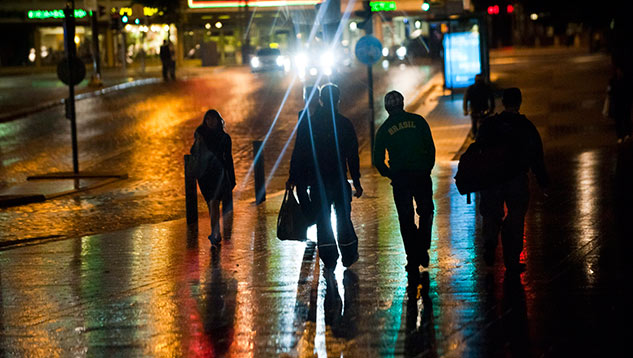Situation overview of violent extremism takes a closer look at women and children

The position and role of women and children in radical Islamist terrorist organisations are under special review in the new situation overview of violent extremism. According to the 2017 overview, more than half of the suspected crimes reported to the police where an extremist motive was indicated were associated with violent right-wing extremism.
Daesh is the first radical Islamist terrorist organisation that has managed to attract a large number of women from around the world, and also from Finland, to travel to the region controlled by the organisation. Daesh has been defeated militarily, but it continues its operations. In the medium term, Daesh is possibly becoming more dispersed, similar to al-Qaida, and in future its cells and networks may act more independently. Daesh will also continue to operate in the digital world. "Finland works systematically to combat criminal activities of violent extremist movements. We must ensure that there will not be groups of people in Finland who are susceptible to the ideology of such movements," says Minister of the Interior Kai Mykkänen.
Many women travelled to conflict zones
In Finland, more than one fifth of all those who have travelled to conflict zones in Syria and Iraq are women. About 20 adult women and 30 children have travelled to these areas from Finland. Some of these children are already adults. It is estimated that a dozen children have been born in these areas to parents who have a connection to Finland. Although all the children are victims, some of them may also pose a security threat. According to the Finnish Security Intelligence Service, more than 80 people identified by the authorities have travelled to the conflict zones from Finland since 2012. This figure does not include children.
Women mainly take care of home and children, but they can also carry out other tasks and they are more and more interested in tasks such as care work, propaganda or armed combat.
Most of the crimes that are related to violent extremism are committed by right-wing extremists in Finland
The police information systems show that about 100 suspected crimes were linked to violent extremism in 2017. More than half of the suspected crimes were related to the extreme right, about one third to religiously motivated extremism and the rest to radical left-wing extremism. However, the crime reporting system of the police does not give a comprehensive picture of the number of crimes because single incidents can be recorded as one offence or each suspected offence can be recorded separately.
The most visible extreme right-wing movement is the National Socialist Nordic Resistance Movement, which was previously known as the Finnish Resistance Movement (Suomen Vastarintaliike). In March 2017, the National Police Board brought an action to prohibit the movement, which has had an effect on its activities. The District Court of Pirkanmaa decided in November 2017 to ban the Nordic Resistance Movement’s Finnish chapter and its branches and associations. This decision is not yet final.
Increase in incidents related to radical Islamist terrorism
Religiously motivated extremism appears in the form of terrorist threats and related crimes as well as sectarian violence. An increase has been noted in cases related to radical Islamist terrorism that have exceeded the threshold of preliminary inquiry, criminal investigation and the bringing of charges. In August 2017, a mass stabbing attack on local people occurred in Turku. The perpetrator is accused of murder and attempted murder committed with terrorist intent.
The terrorist threat in Finland is currently at the level ‘elevated’, or 2 on a four-tier scale of the Finnish Security Intelligence Service. Underlying the raised level of threat is the conflict in Syria and Iraq and the related phenomena.
Overviews since 2013
Violent extremism refers to using, threatening with, encouraging or justifying violence on ideological grounds. Violent radicalisation is a process through which individuals resort to violence or the threat of it, urge someone to commit acts of violence or justify it based on one’s own view of the world or on ideological grounds.
Since 2013, the Ministry of the Interior has regularly published situation overviews of violent extremism. The overview is drafted under the direction of the Ministry of the Interior, together with key experts. The situation overview is based on situational awareness, research data, information generated by key experts, experiences from abroad and other unclassified sources of information compiled by the Finnish Security Intelligence Service, the National Bureau of Investigation and local police departments.
The purpose is to make it easier for the general public, professionals from various fields and organisations to identify and prevent violent extremism and radicalisation.
Violent extremism in Finland — situation overview 1/2018
The previously published situation overviews can be found on the website of the Ministry of the Interior.
Inquiries:
Tarja Mankkinen, Head of Development, tel. +358 295 488 370, [email protected]
